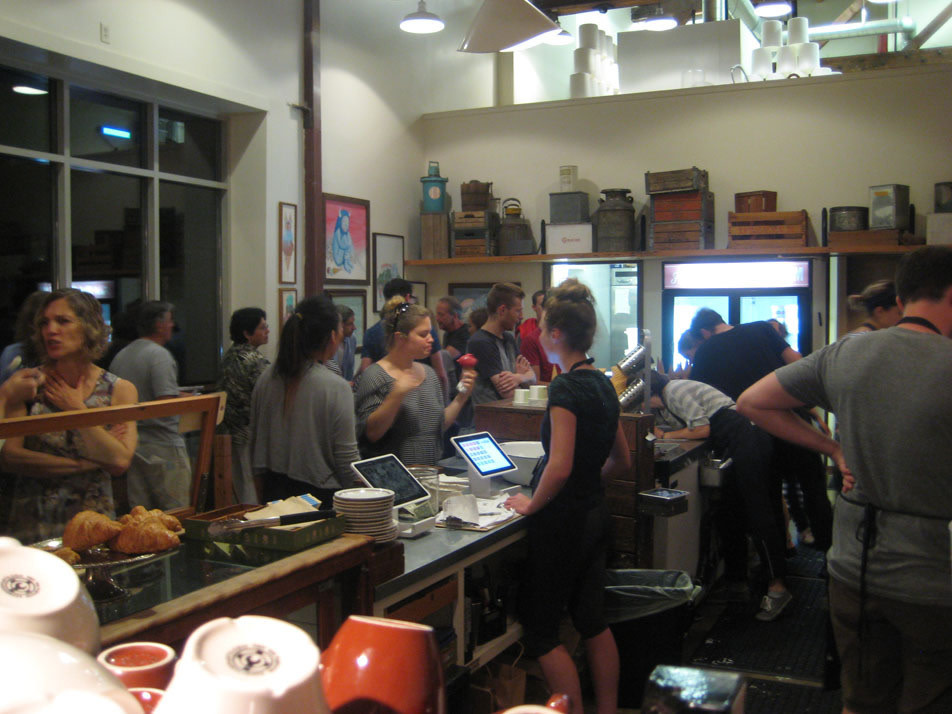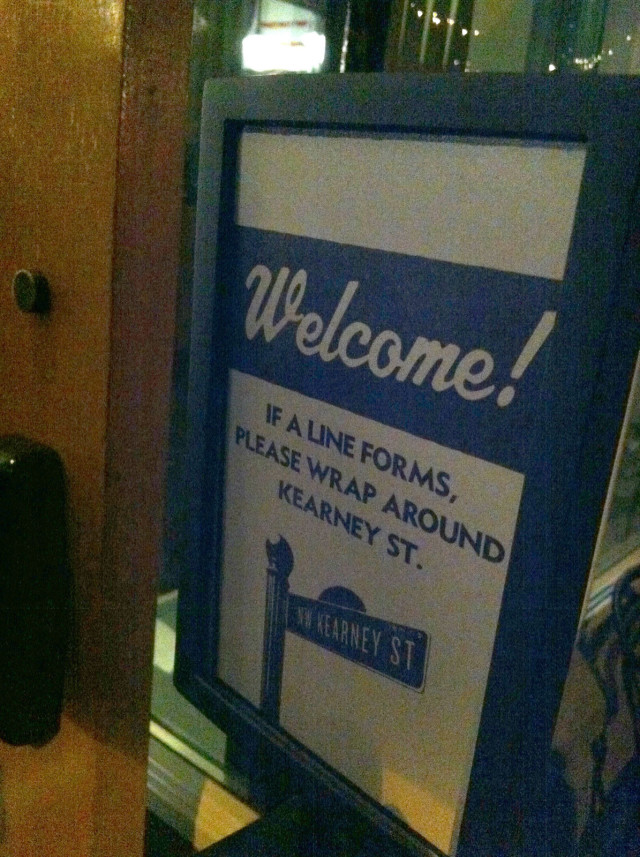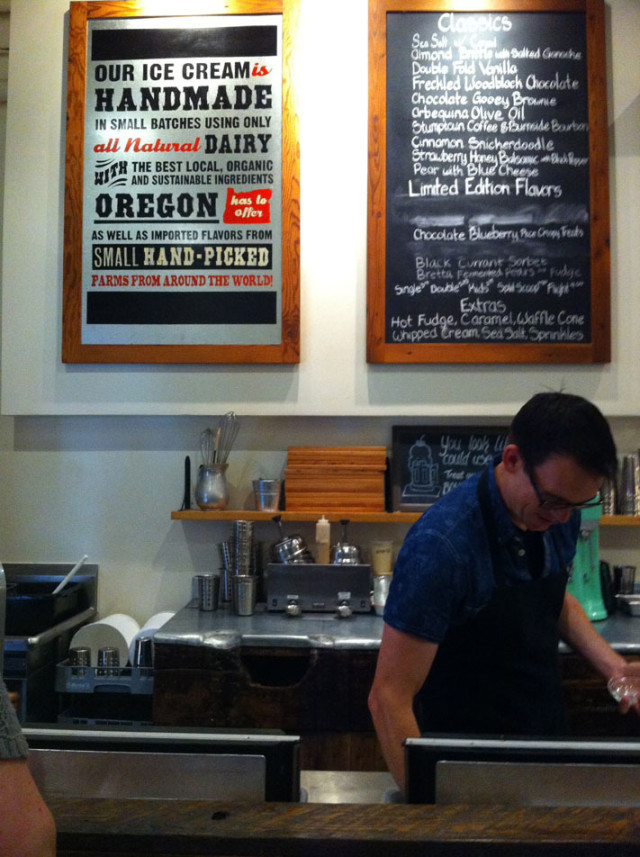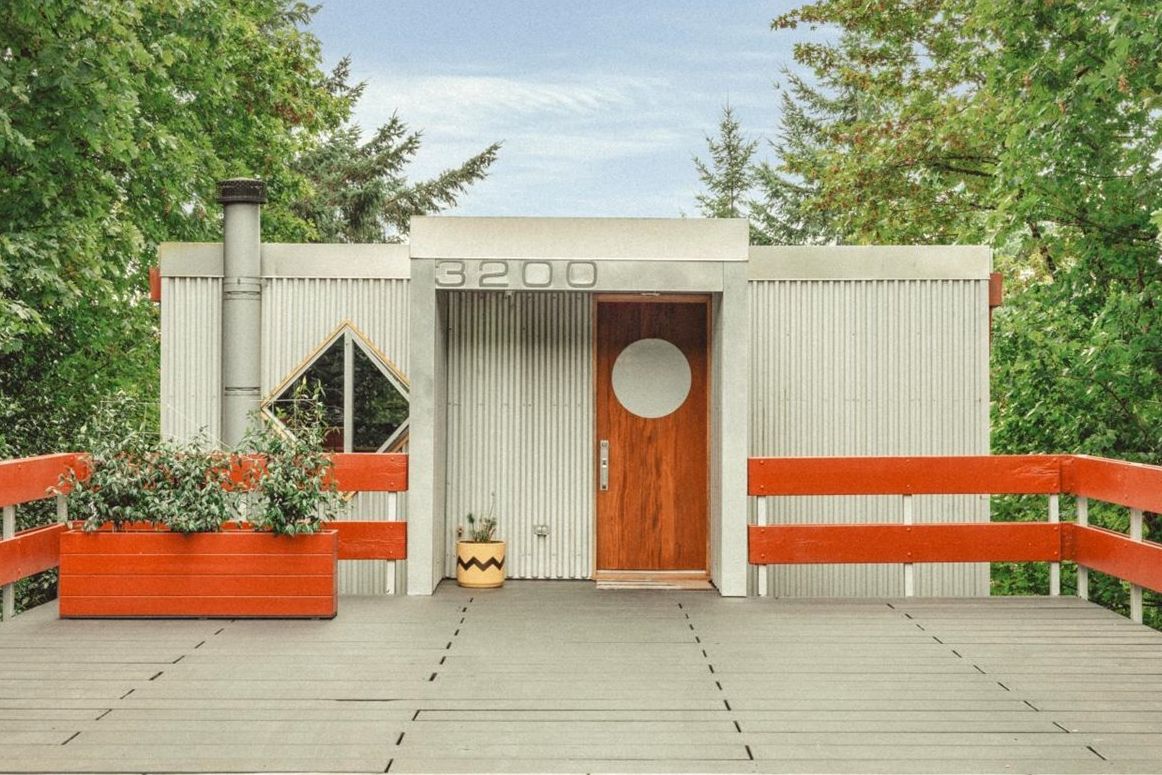The Architecture of Ice Cream

The scene at Salt & Straw on a perfectly warm summer night on NW 23rd: crazy busy but calmly organized, a symphony of Portland tastes both gustatory and visual, digital modernity with olde time artisanal.
Image: Kristin Belz
When you see people standing in a line that wraps around a city block, you know something is going on. What might not be immediately evident. But in the case of Salt & Straw, it’s more than you think. The immensely popular ice cream shop is a case study not only in food fashions but also design trends.

Customer service and smooth operations include anticipating crowds, politely. (The line can wrap around the entire city block.) Scooping staff also venture into the long queue to get customers' orders started before they reach the counter.
Image: Kristin Belz
Lines at the NW 23rd and NW Kearney store (second of the three Salt & Straw storefronts) do indeed wrap around the block at times. The Malek cousins (co-founders Kim and Tyler) seem to be getting everything right, tapping into the Portland zeitgeist not only in what they churn but also in all aspects of how: the design of the shops, the smart operations and customer service, custom collaborations and choice of non-ice cream items they sell at each retail shop.
Now they’re the #1 entry in a recent Architectural Record list of global ice cream parlors. David Sokol’s story spotted three main ice cream shop style trends: “artisanal to mad-scientist to whimsical.” The opening image of the Record slide show tour of international ice cream parlors shows none other than Salt & Straw’s NW 23rd Street shop.

Scooper, calmly scooping, on a busy summer night at Salt & Straw.
Image: Kristin Belz
We’ve been to Salt & Straw for previews of the first and second shops, but wandered over to NW 23rd to see how they were faring in the real world of a warm July night. It was crazy busy, yet all looked sweet. Lines wound only around the corner, not around the entire block, yet customers reported not having to wait more than 15 or 20 minutes to get to the front door. Scooping staff head out into the crowd to proactively get people’s orders going, and the whole process seems festive and interactive rather than the usual drag of standing in line.
John Cooley, Hammer & Hand, Bright Designlab and Sarah Littlefield have all been involved in aspects of designing the retail stores. The style is appealingly utilitarian, merging country store and digital marketplace: Apple iPad "cash registers" mix with scavenged, salvaged and rustic handmade (and just plain much-handled old) stuff.
By contrast, other highlights on the Architectural Record international ice cream tour were:
- Van Leeuwen Artisan Ice Cream – most similar to Portland's entry in the ice cream line-up (after all, it has "artisan" in its name) this shop is, not surprisingly, in Brooklyn’s Boerum Hill neighborhood.
- Edgewood Creamery in Homewood, Alabama – a spare,“new-fashioned” interior, sleekly using simple spruce studs.
- The famous Serendipity shop in NYC relocated and reinterpreted for Boca Raton Resort & Club – high concept olde fashioned shoppe.
- Coolhaus in Culver City, California – with a wink to their former profession, two architects open a shop to scoop the sweet stuff.
- Liquid nitrogen ice cream in the Chin Chin Labs shop in Camden Town, London - mad scientist pop, exposed industrial piping plus sleek bright cabinets.
- DriDri in London – gelato seems to come with its own style: mandatory Italian modernist, bubbly bright and chic. Portland’s Mio Gelato, Staccato Gelato and Alotto Gelato (just up the street from Salt & Straw on NW 23rd) all fit that recipe.




